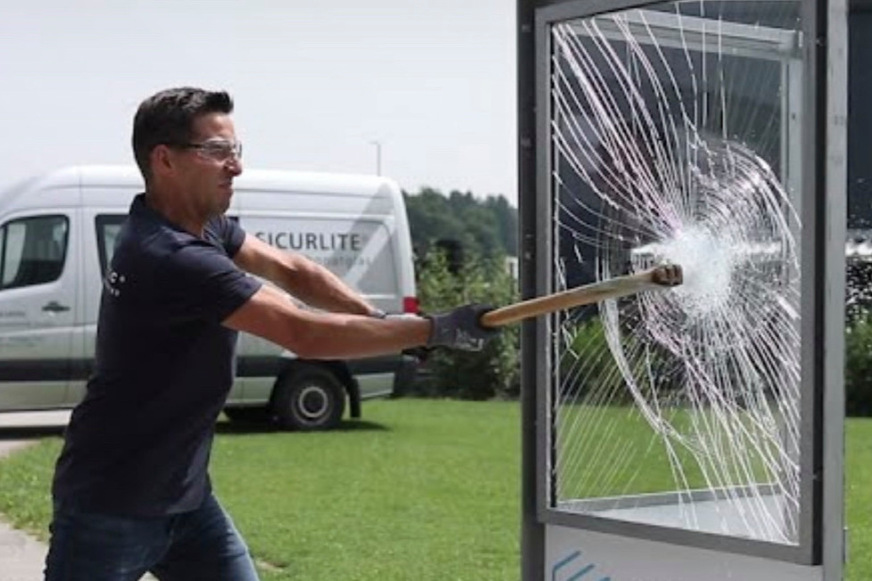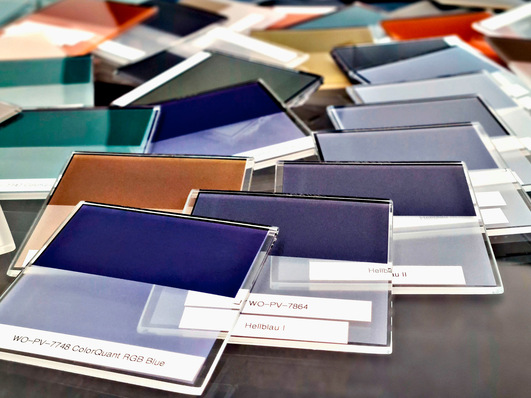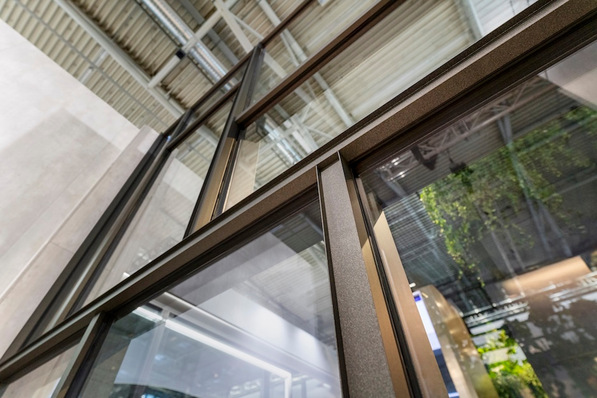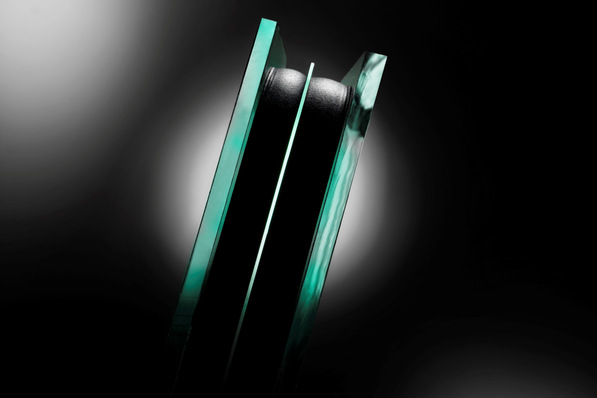GW-News: Safety glass combined with polycarbonate is on the rise. What do each of the components do?
Sebastian Dengg: In such composite systems, the glass acts as the outer protective and supporting layer. It provides hardness, compressive strength, and weather resistance. The mechanical properties of the glass continue to be used to ensure that the overall glass structure is as resistant as possible. With its impact-resistant properties, polycarbonate acts as an energy-absorbing or energy-dissipating layer – especially in the event of attacks such as axe blows, gunfire or high dynamic loads. An smart combination of glass and polycarbonate in various proportions and arrangements is therefore crucial for a resistant and economically efficient glass structure.
The decisive factor is how these materials are combined, laminated and integrated with each other. The composite must be designed in such a way that attack scenarios are efficiently inhibited, but also that stresses caused by temperature differences or peak loads in the system are absorbed. It should also be noted that if the polycarbonate is facing the attack side – as is the case with some bullet-resistant glass – it must be coated with scratch-resistant, optically neutral coatings. However, if the surface is cleaned correctly and not exposed to excessive stress, the glass can remain functional and visually unobtrusive in the long term.
GW-News: What needs to be considered when using polycarbonate in glass structures?
Sebastian Dengg: The decisive challenge lies in the combination of materials. Glass and polycarbonate differ not only mechanically but also thermally. This primarily affects their different expansion at changing temperatures. A suitable and flawless composite system is essential here.
There are also a number of things to consider when integrating the glass into the frame system. The high flexibility of polycarbonate can be advantageous in terms of design, but requires a frame that can absorb deformation in a controlled manner. Blocking, fixing in the frame, material compatibility etc. must be suitable.

Sicurtec
In summary, an unsuitable composite system and faulty glazing can not only create a safety hazard, but the glass can also suffer irreparable damage for an indefinite period of time. In addition to visual obstruction, this can also lead to stress cracks or delamination.
And finally, the manufacture of such glass is demanding. When optical quality, lack of delamination and mechanical performance are all required at the same time, manufacturers reach their limits. This is where the wheat is quickly separated from the chaff in terms of technology.
GW-News: What are the substantial differences between polycarbonate glass and safety glass with films (LSG)?
Sebastian Dengg: LSG is based on the combination of several glass panes using tear-resistant films such as PVB or SGP. This structure has proven itself over decades, is easy to process, cost-efficient and, with the appropriate thickness, also suitable for high resistance classes – but only if the frame, fastening systems and building structure can also absorb the relatively high loads and thicknesses.
Polycarbonate laminated glass, on the other hand, offers impact resistance and energy distribution. It can prevent targeted attacks with lower thickness and mass.
The disadvantage is that it is significantly more expensive. With the right knowledge, the special glazing requirements are unspectacular and easy to handle. Therefore, where the static requirements are met and the weight can be supported, LSG can be more economical. However, where low weight, low thickness, dynamic load acceptance and flexible retrofitting are required – for example in listed facades – the use of polycarbonate laminated glass is often the only technically viable option.
The questions were asked by Matthias Rehberger














